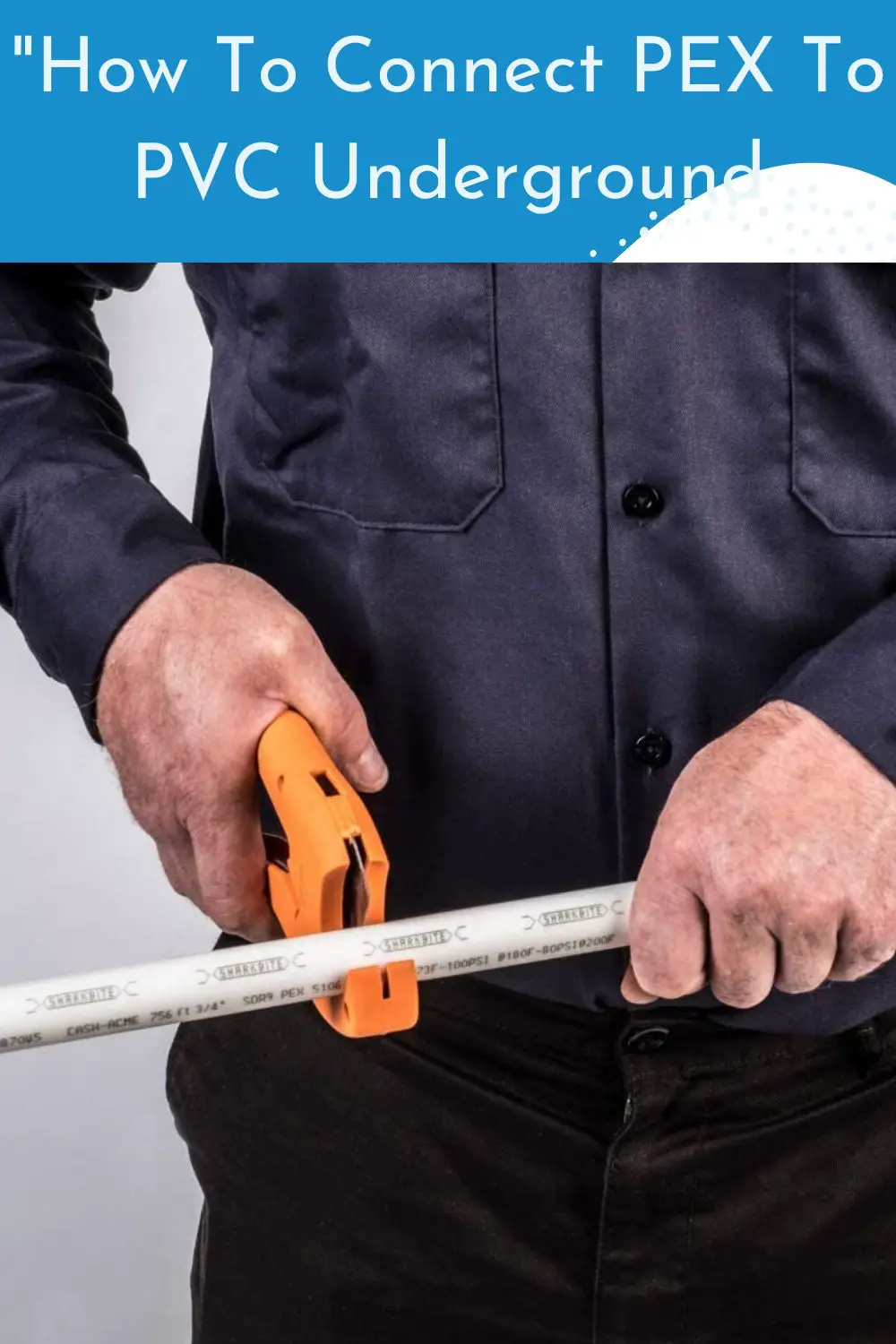Many institutions and home owners now appreciate the role PEX plays in excellent and efficient plumbing connections. We love PEX because its durable, affordable, flexible and quite easy to install. Plumbers love it too because it can run for long distances with very few fittings. Installing PEX underground is a great idea that can be implemented easily. You will however need to familiarize yourself with the local building codes before doing the installation. We have an excellent guide on how you can connect PEX to PVC underground for a successful, safe and code compliant connection.
Is PEX Suitable for Underground Piping?
A PEX pipe is a perfect fit for underground piping works. The manufacturer however recommends that you insulate it properly for outdoor uses. You will need to bury the PEX pipes for at least 12 to 18 inches below the standard frost line. This will keep the pipe warm as the temperature is warmer below the surface. If you live in a cold region, the frost line can be as low as three or four feets down which means you will have to get the perfect position for your piping. The PEX pipe will freeze with the water in it. It is made in a way that it expands to accommodate the ice in it and later contract to the original size when the ice melts.
PEX has high corrosion resistance when compared to other materials like metal. It can also withstand tree roots better. You get maximum benefits when you use PEX pipes underground raging from high flexibility, temperature resistance and minimal connections along the pipes length. If you are installing in an area with high water corrosions and aggressive soils, we recommend the use of brass or plastic fittings.
The fact that PEX is a high density polyethylene makes it a perfect fit when burying under concrete. It is for this reason that most people use it for radiant heating under their concrete floors.
How to Make an Underground PEX to PVC connection
The color coding for PEX provides for red tubing for hot water and the blue tubing for cold water. PEX can be connected to the underground PVC pipe using threaded adapters. Find the water pipe or hose you want to install or replace with PEX and get all the fittings.
On the PEX side, use a female threaded fitting. On the PVC side always use a male threaded socket solvent fitting. You will achieve a tight fitting with a male end plastic and a metal threaded female fitting. If you need some twisting on the coupling, first connect them before completing the attachment of the fittings to the pipe ends.
You can also use other fittings to connect PEX to PVC underground. Save for the threaded fittings, you can also use;
- Push –to- connect fittings: These fittings anchor to the main pipe by pushing them over the end and sealing it with an O-ring. For a perfect connection, run a support liner on the pipe and add a locking component such as a twist collar or snap ring. Ensure you match the fittings with the type of pipe you are using be it PEX-A, PEX-B, Brass or copper. There are local codes that do not recommend “Quick-connect” fittings for underground works but it depends with the products used and the regulations in the locality.
- PEX Reinforced Ring : Place the PEX ring over the end of the pipe then expand the pipe before the inserting the fitting. You will chieve a perfect seal when the pipe cools and contracts to its original shape. Ensure that the reinforcing ring complies with the ASTMF-1960 GUIDELINES.
- Crimp Fitting: This is a simple connection where you slide the metal rings over the pipe ends. Then insert the fittings and tighten the ring over the pipe and fitting with your PEX crimping tool.
- Metal compression sleeves : You will need a PEX expansion tool to expand the pipe as this connection works perfectly with the cold expansion method to fit the pipe over an oversized fitting. Wait for the pipe to cool to its normal size then fit a metal compression sleeve over your connection. Get a sleeve that meets ASTM F 2080 standard for a durable connection.
- Compression Fitting: This one uses a brass nut and a compression ring over the pipe. You will need a metal sleeve on the ring, then insert the fitting. To finalize the connection you will need to tighten the nut and squeeze the compression ring.
- Clamp Fitting : For this fitting you will need a ratchet clamping tool. First slide the steel rings on the PEX then compress the side tab on the ring. The ring will go over the fitting when placed at the end of the pipe.
Read More: Can You Connect PEX Directly To an Electric Water Heater?
Best Underground PEX Fittings
The best fittings to use underground are those that are corrosion resistant as they will give you a higher durability. Stainless steel clamps are good picks for underground works. Other good options include brass push-to-connect fittings with an O-ring.
Other fittings like copper crimps expand when water freezes, unfortunately when the ice melts and the pipe shrinks to the normal size the seal does not adjust. With time the seal breaks giving you numerous leaks.
Final Word
Underground connections need extra care and you need to contact a qualified plumber to do your connection. A leak underground can take a long time to be detected hence you need to be double sure that your connections are secure.
